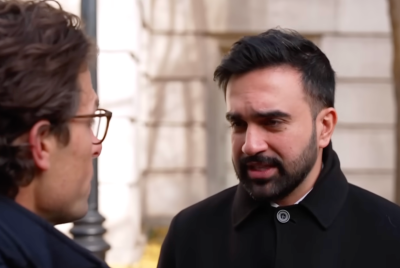"Europe's green energy powerhouse": Scotland on course with ambitious environment targets

The Scottish government's 2020 target for generating renewable electricity has been raised from 80 to 100 per cent.
Alex Salmond, newly elected First Minister for Scotland says his country expects to exceed the 31% target for 2011 and can move "faster and further".
He said he wants the country to become "the green energy powerhouse of Europe".
Mr Salmond said: "Because the pace of development has been so rapid, with our 2011 target already exceeded, we can now commit to generating the equivalent of 100 per cent of Scotland's own electricity demand from renewable resources by 2020."
Mr Salmond hopes that the country can begin to export electricity to other countries because of the rate of production: By 2020 Mr Salmond said: "we intend to be generating twice as much electricity as Scotland needs - just over half of it from renewables, and just under half from other conventional sources.
"We will now move still further and faster to secure our place as the green energy powerhouse of the continent of Europe."
England targets
This comes just under a week after the English government unveiled a legally binding deal for ambitious cuts to carbon emissions in the UK leading up to the year 2050.
Those plans put the English government on course to deliver an 80% reduction in carbon emissions by the year 2050. This will follow a target of 60% emissions cuts by 2030. That story can be found here.
Scotland
It is not just electricity where Scotland sets and hopes to meet ambitious energy targets.
Scotland is on course to achieve substantial carbon dioxide reduction targets too, according to university findings in April.
Researchers from Edinburgh University predict that the country will cut their carbon emissions in half by the year 2030, based on comparable findings in a US survey.
This would be a significant step to achieving an eighty percent CO2 reduction target by the year 2050, set by the Scottish government in 2010.
The CO2 predictions come from a study carried out jointly between Edinburgh University's GeoSciences and Business School and is published in Carbon Management journal.
Carbon emissions
The forecasts are based on a study of projected greenhouse gas emissions in the US which looked at different ways of reducing CO2 output leading up to the year 2030 in America. The scientists drew the Scottish predictions from this report and claim that the findings are equally applicable to Scotland.
The study focused on methods of CO2 reduction that were "economically, socially and politically acceptable" said an Edinburgh University spokesperson.
The study recommended greener transport and building designs as well as improved recycling methods. The research also suggested cleaner power generation and the use of carbon capture and storage techniques in coal-fired power plants.
David Reay, Senior Lecturer in Carbon Management at Edinburgh University, outlined some of the ways that Scotland could achieve the government targets using the natural resources available to the country.
He said: "Our resources in terms of renewables, wind, marine and biomass mean we've got lots of potential. We've also got a massive resource in expertise on renewable energy and land use."
"We've also got the world's leading centre for carbon capture and storage."
"If you're going to set yourself and then meet the substantial target of an 80 per cent reduction of emissions by 2050, Scotland will be the place. If any place can do it, we can."
© Copyright IBTimes 2025. All rights reserved.





















